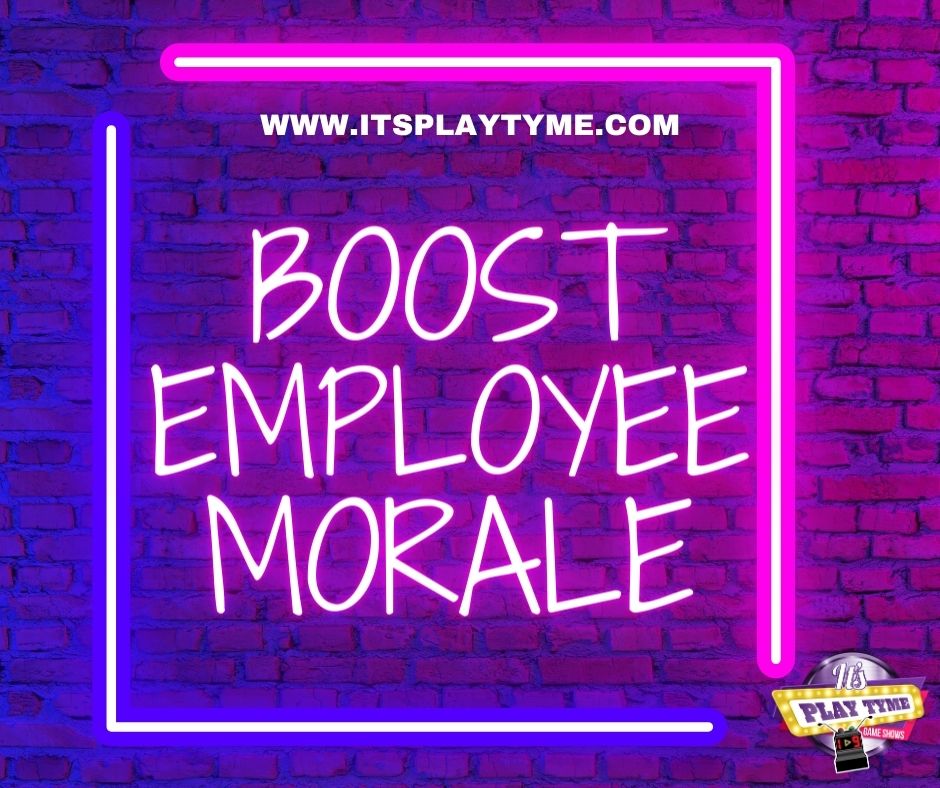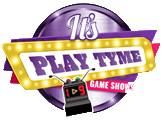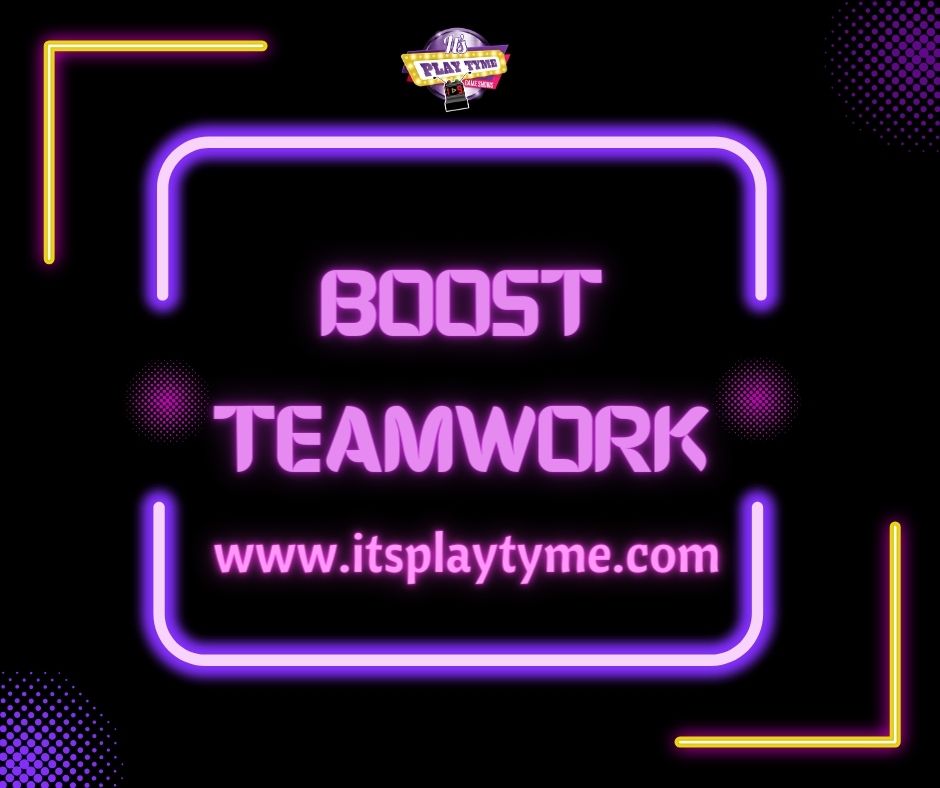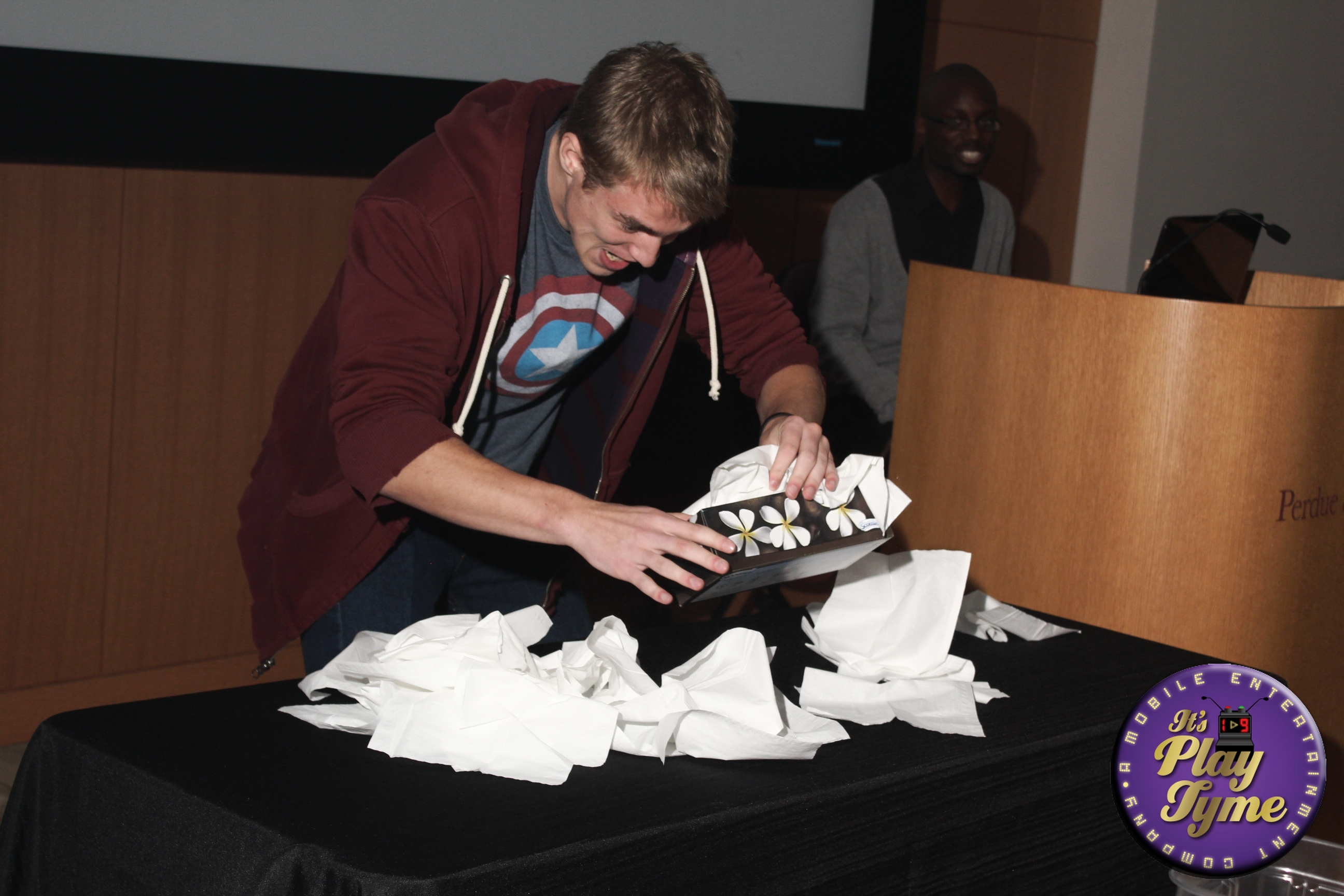Imagine the awe in your stakeholders’ eyes when you show them a team building budget proposal. It’s like a piece of modern art. Mastering the art of budget proposals is powerful. In a world where 50% of failed start-ups lacked a clear budget, a well-delineated team building budget proposal is crucial.
Your proposal is not just numbers; it’s your team’s blueprint for success. It fosters collaboration and a motivated environment. This is key for business benefits.
When you’re looking at direct costs or indirect expenses, remember it’s more than just figures. It’s the story of future triumphs. Getting this story right can mean the difference between approval and rejection.
A solid team building budget allocation shows value and impact. It ensures stakeholder trust through transparency and cost-efficiency.
As you balance practicality and potential, let’s explore tips and tricks. These will turn your proposal into a blueprint for team empowerment.

Team Building Activities in Philadelphia – Jeopardy Style – Event Budgeting
Key Facts
- Understanding direct and indirect costs is essential for crafting an accurate team building budget proposal.
- Financial transparency in proposals engenders stakeholder trust and facilitates project approval.
- Effectively communicating your team building budget allocation can advocate for resources that improve team dynamics and productivity.
- Utilizing free budget proposal templates saves time and ensures consistency and efficiency.
- Highlighting the project’s value through a clear connection between costs and business benefits is instrumental.
- Strategic cost breakdowns and summaries can make your budget proposal more digestible and compelling.
- Getting stakeholder approval is a matter of presentation—ensure your budget proposal picturises financial acumen and project vision.
Understanding the Fundamentals of a Team Building Budget Proposal
Creating a budget for team building is more than just numbers. It’s about getting the most value for your money. This means focusing on cost-effective team building ideas. Let’s explore how to make a budget that everyone agrees on.
What Goes Into a Budget Proposal?
A budget proposal is like a plan for affordable team building activities. It covers everything from venue costs to snacks. It’s important to include all expenses, both direct and indirect. This way, everyone knows what they’re getting for their money.
Most importantly, it shows how budget-friendly activities can improve teamwork and productivity. This is all done without spending too much.
The Four Cost Categories: Direct, Indirect, Equipment & Materials, and Travel Expenses
Knowing the different cost categories is key to a good budget. Here’s a breakdown to help:
| Category | Examples | Typical Cost Influences |
|---|---|---|
| Direct Costs | Team facilitators, exclusive venue bookings. | Dependent on time, location, and exclusivity. |
| Indirect Costs | Administrative efforts, planning time. | Usually absorbed within the department’s budget. |
| Equipment & Materials | Custom banners, tech for presentations. | Varies with customization and technology sophistication. |
| Travel Expenses | Transportation, accommodations for remote locations. | Influenced by distance, mode of transport, and group size. |
Utilizing Free Budget Proposal Templates for Efficiency
Why start from scratch? Free budget proposal templates can save you time. They provide a structure that ensures you cover all financial details. These templates are great for planning budget-friendly team building exercises.
They help you present a professional plan to stakeholders. This is perfect for improving team performance and morale through smart spending.
A good budget proposal is more than just numbers. It shows how investing in team building can bring big benefits. Whether it’s choosing a venue or keeping decor simple, every choice should support your goals. Remember, spending wisely on team building is an investment in your team’s success.
Financial Transparency in Your Team’s Event Budget Proposal
Imagine the confidence you instill when you show the leaders in your group where every dollar goes towards a team event. Transparency is not just good practice; it’s your secret weapon. It helps you get buy-in and reach your group goals.
When you break down your budget-friendly team building exercises in your proposal, leaders can see the value. It’s like giving them a peek into your financial responsibilities and strategic planning. A transparent approach shows you’re committed to using resources wisely and avoiding waste.
- Your stakeholders are more likely to support a plan they understand completely.
- Transparency in budgeting builds trust and enables more informed decision-making.
- It reflects the seriousness and professionalism of your approach.
Here’s How You Can Illustrate Financial Transparency:
- Detail every component of your budget, including direct and indirect costs.
- Showcase your methodical planning through a clear allocation of resources.
- Regularly update your budget projections to reflect real-time financial insights.
| Cost Element | Description | Allocation |
|---|---|---|
| Initial Workshops | Initial team culture assessment and planning session | 15% of total budget |
| Culture Enhancement Programs | Periodic team building sessions and activities | 50% of total budget |
| Administrative Costs | Materials, logistics, third-party consultations | 20% of total budget |
| Contingency Funds | Unplanned expenses to enhance flexibility. | 15% of total budget |
By adding detailed information about each and every line item, you’re not just reporting numbers. You’re telling a compelling financial story. This story assures stakeholders that their investment in budget-friendly team building exercises is sound and strategic.
So, take the lead in demonstrating accountability – your proposal will be all the more persuasive for it!
Strategically Showcasing Your Project’s Value
Showcasing your project’s value means highlighting both immediate and long-term benefits. It’s key to pick budget-friendly team building exercises that boost your project’s appeal. But how do you do it? Let’s explore how to evaluate project impact and cost efficiency.
Evaluating Project Impact and Cost Efficiency
Start by carefully reviewing each part of your proposal. Make sure it meets your organization’s goals. Choose team building activities that offer big results for little cost. For example, exercises that improve communication and problem-solving can make your team work better together.
How to Justify Your Team Building Budget Allocation
To justify your budget, show the return on investment (ROI) of your team building plans. Use data and forecasts to show how these activities can save money or boost productivity. If you can show how these activities lead to better employee retention or teamwork, you’ll win over stakeholders.
Use past team building successes and industry benchmarks to prove your point. These numbers are powerful evidence. Here’s a simple way to present your case:
| Type of Proposal | Purpose | Expected Outcome |
|---|---|---|
| Solicited Project Proposals | Responds to an RFP for a specific need | Targeted solution crafting as per direct request |
| Renewal Project Proposals | Reach out to past clients showcasing results and future potential | Renewal of relations and confirmation of ROI from past projects |
| Supplemental Project Proposals | Request for additional resources during project execution | Enhanced project deliverables with scheduled resource boosting |
Always make sure your proposals show clear, relatable results. This helps stakeholders see the real impact of your project. It’s not just about asking for money; it’s about telling a story of cost-effective team building that brings big returns.
Cost Breakdown for Regular Team Building Events – Budget Matters
Ever wondered how to budget for a regular team building event without spending a lot? his section breaks it down for you and will cover typical costs and smart ways to save money.
The goal is to boost team spirit and teamwork without overspending on an event that doesn’t give any type of return on investment.
| Expense Category | Cost Range Per Person | Typical Inclusions |
|---|---|---|
| Transportation | $10 – $30 | Bus rentals, fuel, parking fees |
| Venue Rental | $50 – $200 | Conference spaces, recreational areas |
| Refreshments | $5 – $25 | Snacks, meals, beverages |
| Activities | $15 – $70 | Workshops, team games, guest speakers |
| Miscellaneous | $5 – $20 | Decorations, gifts, permits |
Using your budget wisely means knowing how to save on team building. Consider virtual events or venues that offer both activities and food. This saves money and adds excitement to your team’s interactions. Also, spreading your budget across different types of activities ensures you cover all bases.
Companies usually budget $30 to $100 per person for these kind of events. This range lets you plan a variety of activities, from social to casual meetups to workshops that ultimately improve teamwork.
Being open about your budget helps get approval and builds trust. Break down expenses like travel, venue, and food to track every dollar. This shows you’re responsible and value a strong team culture. So, use these tips to plan your next event and build a better team.

employee-engagement-game-show-idea
Creating a Compelling Budget Proposal
When you start making a budget for team building, it’s not just about the numbers. You’re telling a story that shows why investing in your team is worth it. Begin by setting clear goals for your team and finding ways to achieve them without spending too much.
a – Describe Your Team Building Goals and Objectives
Start by explaining what you want to achieve through team building. Do you want to improve communication, boost creativity, or keep employees happy? Make sure to connect these goals to your company’s bigger picture.
Outline how these changes will help your team work better together. Show how this will benefit your company as a whole.
b – Making the Case: Align Costs with Business Benefits
In your proposal, show how team building expenses will help your business grow. Explain how activities can lead to better productivity, happier employees, and even more money for your company.
Use examples of low-cost ideas, like using what you already have or finding sponsors, to prove your plan is doable.
| Resource Type | Availability | Cost Efficiency |
|---|---|---|
| Internal Workshops | High | Most budget-friendly |
| Virtual Team Building | Moderate | Cost-effective for distributed teams |
| Corporate Retreats | Low | Higher cost, high impact |
| Local Sponsorships | Varies | Reduces direct costs |
Don’t just talk about short-term gains. Show your team how investing in the group will pay off in the long run.
This shows you’re thinking ahead and helps others see the value of their participation as well. Use past successes to support your proposal and make it clear that regular team building is key to your company’s success.
Efficient Resource Management: Strategic Allocation in Team Building
Planning your team building needs a smart budget plan. You must know where to spend your money for the best results. This means using strategy, checking what works, and trying new things.
Let’s explore how to make every dollar count. Every part of your team building, from where you meet to what you eat, can be a chance to save money without losing quality.
To get the most from your budget, here’s a detailed look at costs and how to plan your budget:
| Cost Factor | Details | Strategic Allocation Tips |
|---|---|---|
| Venue Rental | Vary based on location, size, and facilities | Negotiate long-term relationships for better rates |
| Transportation | Includes shuttle services or rental vehicles | Coordinate carpools or choose venues accessible by public transit |
| Facilitator Fees | Essential for guiding team activities | Invest in skilled facilitators who offer scalable solutions for large groups |
| Accommodation | Consider for overnight retreats | Book in bulk, and well in advance, to secure discounts |
| Meals | Keep participants energized throughout the event | Opt for local caterers with budget-friendly options |
| Equipment and Materials | Required for specific challenges | Reuse materials and rent equipment rather than purchasing |
It’s not just about saving money. You also need to check if your team building is working. Ask for feedback and look at how happy and productive your team is. Use this info to make your future team building better.
Remember, effective resource management isn’t just about slashing costs; it’s about making the most of your investment. Finding the right balance can turn a regular team building into a chance for growth.
Now you have the tools to plan a team building that’s both impactful and affordable. Every choice you make helps build a stronger, more agile team and a financially savvy organization.
Innovative and Cost-Effective Team Building Ideas
Looking for ways to boost teamwork without spending a lot? You’re in the right spot. Here, you’ll find low-cost team building events and exercises. They increase employee engagement and make your investment worth it.
Low-Cost Team Building Activities That Maximize Engagement
Want to raise team spirit with fun, affordable activities? Try office trivia challenges to spark friendly competition. Or, have a picnic in a local park for bonding and relaxation. These ideas save your budget while adding fun to your team’s life.
Cost-Conscious Team Building Solutions to Explore
Seeking budget-friendly team building options? Every dollar saved helps. Try silent team building exercises for non-verbal skills or DIY wellness stations for health and teamwork. These activities show that team building can be affordable. Scroll down for more details on these ideas.
| Activity Type | Description | Primary Benefit |
|---|---|---|
| Indie Board Games | Teams play light-hearted board games that need strategy and teamwork. | Boosts problem-solving and team dynamics. |
| Recipe Swap | Members share favorite recipes and cook dishes, showing cultural diversity and interests. | Encourages sharing and learning about diverse backgrounds. |
| Mystery Box Challenge | Teams create something unique with random items, promoting creativity under constraints. | Fosters innovation and adaptability. |
| Virtual Escape Room | Participants solve puzzles and decode messages in a set time, enhancing remote collaboration. | Strengthens remote communication and collective problem-solving skills. |
| Company History Timeline | Teams create a timeline of significant company milestones, deepening their understanding of the company’s heritage. | Builds a sense of belonging and company pride. |
| Wheel of Questions | A fun game where team members spin a wheel to answer personal or professional questions, improving openness. | Enhances personal connections and team cohesion. |
| Mindful Minute Challenge | Teams participate in guided sessions to practice mindfulness and reduce workplace stress. | Promotes well-being and productivity among team members. |

boost-staff-morale – Team Building Budget
Optimizing Team Building on a Limited Budget
When your budget is tight, you need to get creative. You don’t have to cut corners on fun or productivity. Instead, focus on smart spending and DIY projects to create a fun team experience. Here’s how to stretch your dollars and keep your team excited and engaged.
- Embracing the Great Outdoors: Many fun, low-cost activities are right outside your door. Outdoor retreats offer a mix of nature and convenience, often just a hike or a park visit away.
- Transform ‘Lunch and Learns’ Into Power Sessions: These sessions are great for sharing knowledge without spending a lot. Plus, bringing your own lunch makes it more personal and affordable.
- DIY Workshops: Use your team’s hidden talents to save money. Whether it’s painting, poetry, or coding, hosting a session led by team members boosts morale and respect.
- Scavenger Hunts with a Twist: Scavenger hunts are fun for all ages. A well-planned hunt can turn an ordinary day into a memorable team-building experience.
Successful team building on a tight budget requires creative thinking and smart budgeting. Use what you already have, choose affordable activities, and involve your team in planning.
This way, your limited budget becomes a chance to be creative, not a roadblock. So, get ready to turn a small budget into a big team-building success without spending a lot!
Forecasting Profits and Measuring ROI in Team Building
Imagine starting a team building project. You’ve planned activities to improve teamwork and boost performance. But, how do you make sure every dollar spent is worth it? Knowing how to allocate your team building budget and measure ROI is key.
How Budgeting Links to Team Building Success Metrics
By choosing cost-conscious team building solutions, you’re not just planning a fun day. You’re setting the stage for real business gains. Good budgeting is linked to better performance and more engaged employees. Think of your budget as a guide for your financial decisions.
Tracking Financial Goals: From Project Inception to Completion
From the start, tracking financial goals is crucial. It helps you see how well you’re doing against costs. This ensures your team building efforts are efficient and meet your strategic goals.
When planning your project, use a detailed table to compare expected ROI with actual ROI. This helps you see how your project’s finances are doing:
| Financial Metric | Expected | Actual | Remarks |
|---|---|---|---|
| ROI | 42.9% | Varies | Initial positive outlook, adjust based on real outcomes |
| Delivery Margin | Calculable from revenue | Post-project figures | Focuses on team profitability |
| Cost Breakdown | Labor, suppliers, other expenses | Final tallied costs | Crucial for post-analysis and future planning |
| Project Profit | Predicted based on activities | Actual revenue – costs | Direct indicator of financial success |
By tracking these metrics, you make sure team building is a strategic investment. It’s not just about spending money. It’s about building a strong team that will pay off in the long run.
Team Building Budget Proposal: Presenting for Stakeholder Approval
When you’re ready to present your team building budget proposal, remember it’s a big deal. A good proposal shows why the budget is needed and the benefits of team building activities. It’s important to make your proposal clear and show how it helps your business goals.
Structuring Your Proposal for Impactful Presentation
A successful proposal is organized and easy to understand. Use templates for Microsoft Word, PowerPoint, or Google Slides to make it familiar to your stakeholders. Include a summary, cost breakdowns, and diagrams like pie charts to help visualize the budget.
The Importance of Signature Areas in Your Budget Document
Signature areas in your proposal are very important. They let stakeholders approve the budget. These areas show the team’s effort in planning the budget. Make sure they are clear and include an executive summary of your proposal.
Your goal is to show the value of team building. A clear, detailed proposal with visuals and signature areas will help you get approval. This sets you up for success in team building.
Got Games? – PRESS PLAY! #teamgamesatwork #boostmorale
Team Leaders! Book a live game show experience today!
Contact us for further details.
We come to your office, venue or off-site location..
For Immediate assistance by text – 917-670-4689
No deposit required. 5-star rated on google.
Conclusion
As you’ve explored the world of team building budgets, it’s clear that creativity and smart spending are key. Finding affordable team building activities is not just about saving money. It’s about understanding how each dollar can help your team grow and succeed.
Whether you choose budget-friendly options or splurge on a big event, the goal is the same. It’s about strengthening team bonds and boosting morale. And the good news is, you don’t have to spend a lot to make a big impact.
- Online registration systems can increase attendance by a significant percentage, making your team building efforts more effective.
- Using social media and interactive emails can also boost participation rates, helping your event reach more people.
- Choosing the right venue photos can impress stakeholders and help get their approval.
When planning your event, consider all the costs. This includes venue rental, food, and entertainment. It might seem overwhelming, but Outback Team Building & Training offers activities starting at just $11 per person. This shows that you can save money and still have a great time.
Remember, your budget proposal is your guide to creating unforgettable team experiences. It’s about being smart with your spending and making sure your team has fun. Plan carefully, add value where it matters, and watch your team’s morale soar without spending too much.
Preparing for Future Team Building Initiatives – A Look Ahead
Looking ahead, team building on a tight budget can still lead to great team spirit. Anthony Mixides from Bond Media says team-building will be key to better team dynamics this year. You can beat budget limits and strengthen your team’s bond with smart, affordable ideas.
Imagine your team doing fun activities like the Face-2-Face Feud or Word Play Puzzles? These low-cost games are more than just fun. They help build a strong team culture, something 46% of job seekers want, according to Indeed.
Plan ahead for your team’s needs and match them with your business goals. Keep a list of fun, affordable activities like Blind Drawing or Helium Stick. This shows you’re smart with money and still care about team building.
Such planning keeps team activities impactful without breaking the bank. It’s key to a culture where money doesn’t stop team growth. Team building boosts employee engagement and morale, making work better for everyone.
So, let’s set sail with confidence by collecting budget-friendly team building ideas to guide you to your goals. Celebrate team wins and invest in trust and communication with a smarter budget.
Efficiency, creativity, and your vision will lead you to a great team environment. It’s not about fancy equipment, but a team working together smoothly. Here’s to a more strategic and joyful journey ahead.
FAQ – Team Building Budget
1 – What essential elements should be included in a team building budget proposal?
A good team building budget proposal should list all costs. This includes direct and indirect expenses, equipment, materials, travel, and more. It’s also key to explain why these costs are worth it for the team and company.
2 – How can we organize a team building event that’s budget-friendly and impactful?
Think outside the box with affordable ideas. Try in-office challenges, team potlucks, or local service projects. Virtual games are also great for team bonding without spending a lot.
3 – Why is financial transparency important in a team building budget proposal?
Being open about costs builds trust. It shows you’re managing money well. This makes stakeholders more likely to support the team building activities.
4 – How can we justify the allocated budget for team building activities?
Show how team building will improve teamwork and productivity. Explain how the costs will lead to positive results for the company.
5 – What are some strategic cost categories to consider when planning team building activities?
Consider labor, venue rental, materials, digital resources, and travel costs. These are key areas to budget for.
6 – How can we optimize team building events when working with a limited budget?
Use free spaces and tap into your team’s talents. Choose activities that don’t need much. This includes group discussions and problem-solving games.











